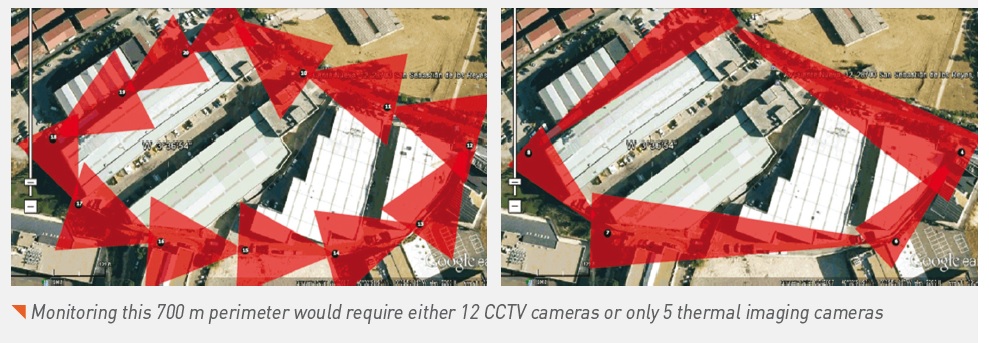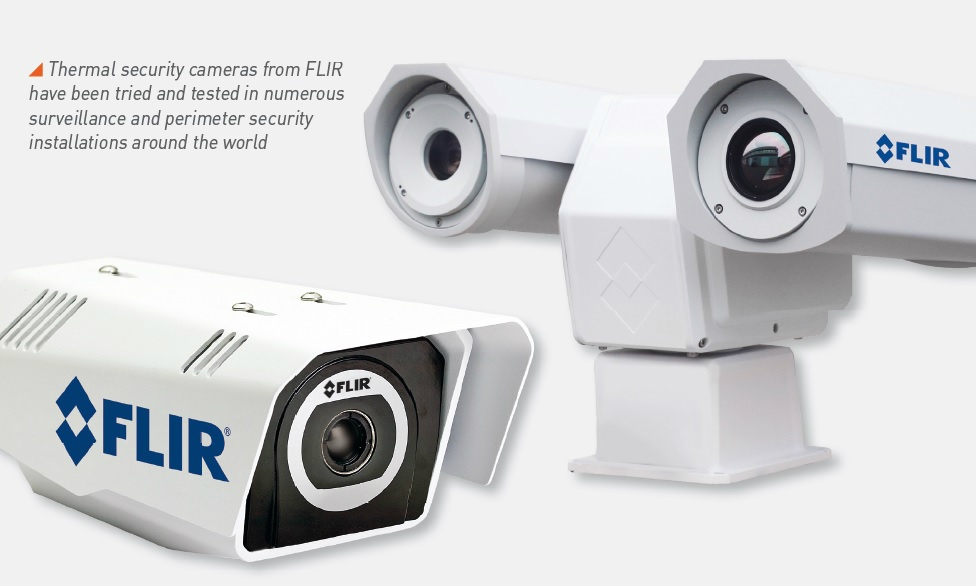THERMAL IMAGING IS TAKING THE WORLD BY STORM
Less than ten years ago, thermal imaging might have been remarkably unknown to the wider public, but today the technology is catching up very fast. And yet, sometimes even professional security buyers still have reservations against thermal imaging cameras for surveillance applications.
Thermal imaging the technology has been tried and tested in numerous professional surveillance and perimeter security installations around the world. Thermal security cameras let you see intruders and other threats to your facility clearly in total darkness and in bad weather. Still, even with professional users and buyers, thermal imaging has to cope with a number of reservations, most of which have to do with cost and performance.
Reservation #1: price
What does it cost to secure your perimeter 24/7? And most of all: are thermal imaging cameras more expensive than traditional CCTV systems? As CCTV systems become more advanced, the security industry increasingly focuses on CCTV installations for 24 hour surveillance. To be truly secure, a site must be protected day and night.
To get a full picture of the total cost of ownership for a certain solution, not only the initial purchase cost, but also the installation and maintenance costs need to be considered. Some solutions consume a lot of power and need a lot of spare parts. Saving energy by looking at running costs will become increasingly important.
Closed-circuit television (CCTV) combined with traditional lighting
CCTV systems are effective for security and surveillance applications. However, just like the human eye, CCTV cameras do not see much in total darkness. So in order to detect intruders at night they are often complemented with traditional lights by mains driven bulbs. Although some bulbs are more efficient than others, the operational cost remains very high. Light can only penetrate a certain distance and completely illuminating an area, so that it can be kept under surveillance of CCTV cameras, is not always possible.
Closed-circuit television (CCTV) combined with LEDs
Compared to bulbs, LEDs provide significant savings on electrical consumption. LEDs also provide long life performance with little ongoing maintenance costs. Infrared illumination with LEDs, sometimes also called active infrared, beams infrared radiation into the area in front of a camera. the LEDs are often placed around the lens of the camera. LED illumination is compromised by limited range performance. Also, providing lighting for domes has long been a challenge for CCTV professionals as the lighting cannot be fitted to move with the camera.
Thermal imaging
Thermal imaging cameras produce images of invisible infrared or “heat” radiation. Based on temperature differences between objects, thermal imaging produces a crisp image on which the smallest of details can be seen. They work both during daytime and night time and require no additional lighting. So how do thermal and visual CCTV systems compare? Let’s look at the required number of camera units for perimeter protection systems based on CCTV cameras versus systems based on thermal imaging cameras. Say that we want to protect an industrial perimeter of 700 meters. The perimeter needs to be secured day and night, in all weather conditions. This means that CCTV cameras are limited in terms of distance that can be covered by the infrared illuminators. In this simplified example, the cost of personnel and equipment during the installation and the cost in maintenance and power bills are not included, as they might vary strongly depending on available infrastructure, local power rates and local wages.
In all cases these costs will be directly proportional to the amount of equipment and on the usage of lighting. Even though the price of one single thermal imaging camera might be higher than the price of a CCTV camera, the overall investment costs for a thermal imaging camera perimeter protection system is actually lower, in this case 28% lower. The larger the perimeter, the bigger this difference will become. Since thermal imaging cameras require no lighting to function and given the fact that fewer cameras are needed with the thermal imaging perimeter protection solution, this system will also consume less electricity than the CCTV solution, making the thermal solution less expensive in its upkeep than the CCTV solution. Monitoring this 700 m perimeter would require either 12 CCTV cameras or only 5 thermal imaging cameras.

Reservation #2: durability
Once the investment for thermal imaging cameras has been made, it is important to know whether these cameras are durable and built to last. Perimeter security cameras have to endure a lot, due to their outdoor installation. Lightning strikes for example can cause irreparable damage to outdoor cameras. Outdoor cameras are often installed in remote locations which require them to rely on sometimes poor quality power. Poor input power quality may be compounded by the injection of noise, voltage spikes and transients onto the power, Ethernet and video coax cables along the long cable runs to each camera. In order to better protect its thermal security cameras and safeguard the investment made, FLIR Systems provides a thoughtful design that ensures the survivability of the camera in electrically adverse environments. the cameras have been engineered to provide a high degree of protection against a variety of problematic power, communication and video signal conditions that can cause problems for cameras.
The FLIR FC-Series S for example uses a rugged aluminium alloy case, which minimizes any interference from the local environment with the camera operation. FLIR’s FC-Series S is designed for applications that are exposed to lightning and has protection circuitry that only allows the intended signalling to pass through. This way, FC-Series S has significant immunity to abnormalities on its power lines. In addition to the lightning protection, FC-Series S provides immunity against voltage dips and surges, fast transients, short interruptions, and conducted RF disturbances.
Reservation #3:
Reservations about the performance of thermal imaging cameras disappear very fast from the moment you experience what this technology can do. For starters, thermal imaging cameras allow you to see in total darkness. Since everything generates heat, thermal security cameras can see as well at night as they can during the day. Cameras dependent on visible light are useless at night or in poor visibility without supplementary illumination from lights or lasers. Thermal energy also passes through many obscurants including smoke, dust, modest foliage and light fog. In most cases, thermal energy travels through the atmosphere more effectively than visible light. As a result, thermal imagers can see activity at extreme ranges, while visible cameras, which rely on colour contrast, fail.
Conclusion
Security technology buyers have less and less reasons to doubt thermal imaging. Certainly today, the technology has become more cost-effective than ever before. In the perimeter example given above, the overall investment costs for a thermal perimeter protection system are actually lower than for a traditional CCTV system. Add to this the extreme durability and high performance of thermal imaging cameras, and you have a risk-free investment that will protect your perimeter for many years on end.



